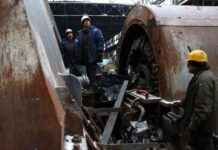The better is the enemy of the good. The Heinkel He-111, the first modern medium-weight bomber developed in Germany, had barely completed its maiden flight in 1935, and even before series production had begun, when the Reich Air Ministry commissioned its successor. Three aircraft factories took part in the secret tender for a future high-speed bomber: Henschel with the Hs-127, Messerschmitt with the Bf-162, an enlarged version of the Bf-110 heavy fighter – and Junkers with the Ju-88.
From the outset, the invitation to tender may have been aimed at a design by Junkers Flugzeugwerke, which was fully nationalized in 1935; the development orders for the two competitors could have been cosmetic, but this has not been proven with certainty. In any case, the client exerted considerably more influence on the Junkers proposal than on the other two drafts.
And so Junkers chief pilot Karlheinz Kindermann was able to undertake the maiden flight three days before Christmas 1936 with a prototype of the Ju-88. The Bf-162 was not ready to fly until February 1937 and the Hs-127 not until September of the same year. Incidentally, both competing designs were smaller than the Ju-88: They each had just under 40 square meters of wing area, while the Ju-88 had 52 square meters. However, the Bf-162 and Hs-127 closely resembled the De Havilland Mosquito, which development did not begin until 1938.
A change in the requirements finally ruled out the two competing designs in the summer of 1937: Even before the first positive experiences with the Junkers Ju-87 single-engine dive bomber in the Spanish Civil War, the Reich Air Ministry demanded that the projected twin-engine high-speed bomber also have the ability to dive. For the sixth prototype got an automatic dive brake; in fact, about half of all Ju-88s produced were equipped with them. However, this modification reduced the top speed by around 40 kilometers per hour – counterproductive for a “fast bomber”.
In the fall of 1938, Junkers was commissioned to prepare for large-scale production. In the medium term, the Ju-88 should replace the previous Dornier Do-17 and Heinkel He-111 medium-heavy bombers as the Luftwaffe standard. However, production only actually began in mid-1939, so that by the end of the year only about a hundred machines could be handed over to the Luftwaffe.
After individual missions over the North Sea at the end of 1939 and during the invasion of Norway in April 1940, the first large-scale operation of the new type followed a few weeks later against the evacuation of the British army from Dunkirk. In mid and late summer, several Ju-88-equipped fighter squadrons, like those with the He-111, flew daytime bombing raids against Royal Air Force bases.
But casualties were heavy – not quite as bad as the slower Dorniers and Heinkels or the soon-to-be withdrawn Ju-87s, but still too heavy. So the Luftwaffe switched tactics to night raids, leading to the indiscriminate bombardment of civilian targets in London and elsewhere.
On the other theaters, over the Mediterranean Sea and North Africa, the Balkans and above all on the Eastern Front, the Ju-88s were the best machines in action well into the war. But this did not apply to the air war over western and central Europe. From the spring of 1942, British Bomber Command was regularly able to deploy more bombers at once than the Luftwaffe had ever managed.
Now the Ju-88 got a new task: converted to a night fighter (without dive brakes, but equipped with radar) and equipped with more powerful engines, it defended the home front against the ever-increasing stream of heavy British bombers. The US bombers, which regularly attacked during the day from 1943, attacked groups of single-engine fighters, at night that was the task of the Ju-88 and the Messerschmitt Bf-110 heavy fighters, which were now useful again and had actually been retired.
In order to protect cities and, above all, the armaments industry against the constant danger from above, the air force had to withdraw thousands of anti-aircraft guns and hundreds of aircraft from other theaters of war; this was arguably the more important effect of strategic air warfare than the direct damage caused by incendiary and high-explosive bombs on the ground.
The Ju-88 proved to be the Luftwaffe’s most versatile and constructively best mass-produced aircraft; nearly 15,000 were built. Unlike the single-engine Focke-Wulf Fw-190, which at times was technically even ahead of the latest British fighters, the Junkers never reached the performance of the similarly variable Mosquito fast bomber. However, this machine, made of special plywood, was lighter on the one hand and more powerful on the other hand – and never designed for the particularly high loads of frequent dives (which the Ju-88 very seldom flew in practice).
About 1,100 of the enlarged further development of the Ju-188 (without dive brakes) were delivered to the Luftwaffe as bombers, night fighters and reconnaissance aircraft. But in September 1944, for example, only 350 of these were in service, while at the same time 2483 Ju-88s of all versions were available.
In 1945 the draft from 1936 was finally technically obsolete. Thousands of Ju-88s that were still in existence but no longer airworthy due to a lack of spare parts or fuel were scrapped. Not even a dozen copies remain in museums – and there are only two of them that did not have to be extensively restored.
You can also find “World History” on Facebook. We are happy about a like.








